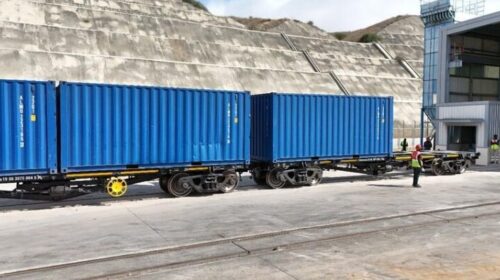Towards a new commodity supercycle (Analysis)
Rising commodity prices are leading bank analysts and policy makers to question whether resurgent commodity demand and insufficient supply will create a new commodity supercycle. Price fluctuations, of course, are as old as the business itself. A commodity supercycle is different, however.
In the usual business cycle, demand drives up prices and supply increases in an attempt to capture this windfall, driving prices down again. In a supercycle, the supply is so insufficient for the growth of demand that prices rise for years or even a decade or more.
Before looking at the current possible supercycle, we should take a quick look at the last two. In the 1970s, soaring oil prices created a boom that lasted until the early 1980s. In the early 2000s, Chinese demand for copper, steel, aluminum, coal and gas. copper kept prices high until 2014, peaking thanks to record oil prices in 2008.
On this long timeline, we can just see the emergence of today’s possible supercycle.
Two components of this potential supercycle – oil and gas and metals – are relevant to the prospects for decarbonization. They are also increasingly connected to each other.
First, oil and gas. One indicator in favor of a potential supercycle is the very low investment in oil and gas exploration. As prices fell by more than $ 100 a barrel in 2014, capital spending also fell. In real dollar terms, oil and gas investment is at about the same level as 15 years ago, when demand for oil was 10% lower than at the end of 2020 and more than 15% lower than it was at the end of 2020. that it was before the pandemic.
Two things could counteract this. First: if the prices of oil and gas rise steadily and the return on capital increases, investors may demand more investment. Number two: Unused production capacity within the Organization of the Petroleum Exporting Countries has soared during the pandemic to more than 10 million barrels a day and remains far higher than at any time in this century. This unused capacity could be a relief valve on high prices, as could a resumption of shale production in the United States if prices are high enough to support new investment (and if capital markets are prepared to fund them. ).
With the International Energy Agency predicting that global oil demand will not rebound to pre-Covid levels until 2023, OPEC’s reserve capacity could be very relevant, especially if demand for oil has already reached a peak. summit, as BP Plc said last year. This does not mean that prices will not continue to rise, but rather that the industry has mechanisms in place to meet demand.
Now, however, to metals, albeit in a roundabout way.
It has always been true that rising oil prices will cause consumers to seek alternatives. In the 1970s, petroleum was still widely used as a fuel for power generation, and coal-fired generation capacity was added to replace it when oil prices soared. In transportation, however, alternative fuels and electric powertrains were pipe dreams.
This time around, there are alternatives to petroleum in surface transportation that are technically efficient, increasingly economically competitive, and available worldwide. The last time oil cost $ 100 a barrel, in 2014, only 300,000 electric passenger vehicles were sold. Last year that figure was 3.1 million; this year it will probably be closer to four and a half million. Growing electric vehicle fleet is reducing demand for oil; add light electric vehicles and two- and three-wheeled buses around the world, and we’re already looking at one million barrels per day of avoided oil demand from 2019.
Global metal producers stand to benefit from increasing electrification, and not just in the transport sector. BloombergNEF estimates that global demand for copper in the clean energy and clean transportation sectors will double over the coming decades, to nearly 5 million tonnes per year. The demand for copper this year is expected to be around 24 million tonnes, so that jump would be a big increase.
As economists know, smart people have been saying “this time is different” for eight centuries and have proven themselves often and completely wrong. As we look at the start of a possible commodities supercycle today, we really should ask ourselves if this time is any different.
This time around, reducing demand for one commodity (petroleum) would stimulate demand for another (metals) in a way that could really be sustained for years or decades. Companies that meet this demand will come under increasing scrutiny, with investors and the public keenly interested in the environmental sustainability and carbon intensity of their extraction and processing. If we enter a metals supercycle, it will be a cleaner cycle, with the potential to decarbonize part of the economy and reduce emissions in the process.
![]()





